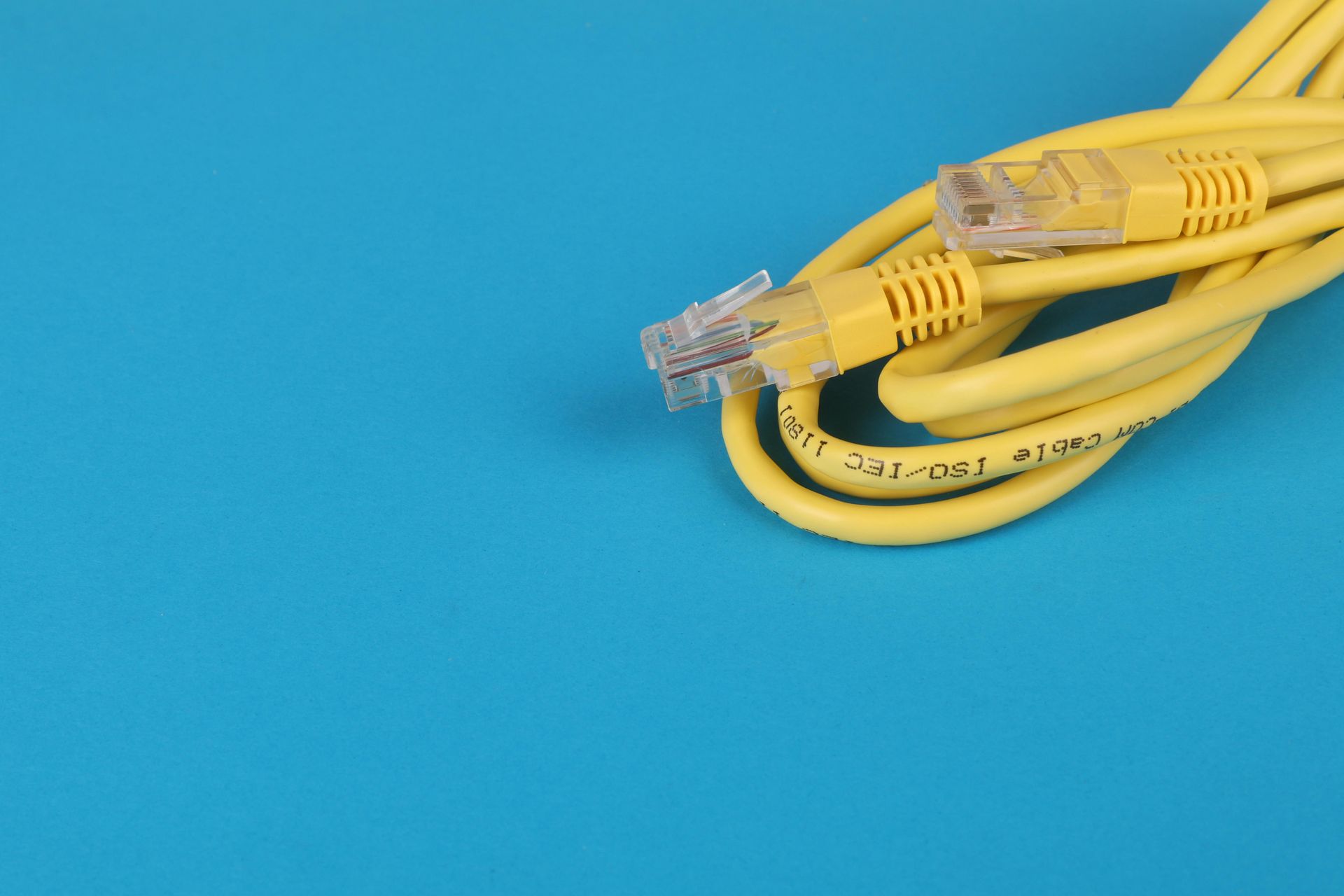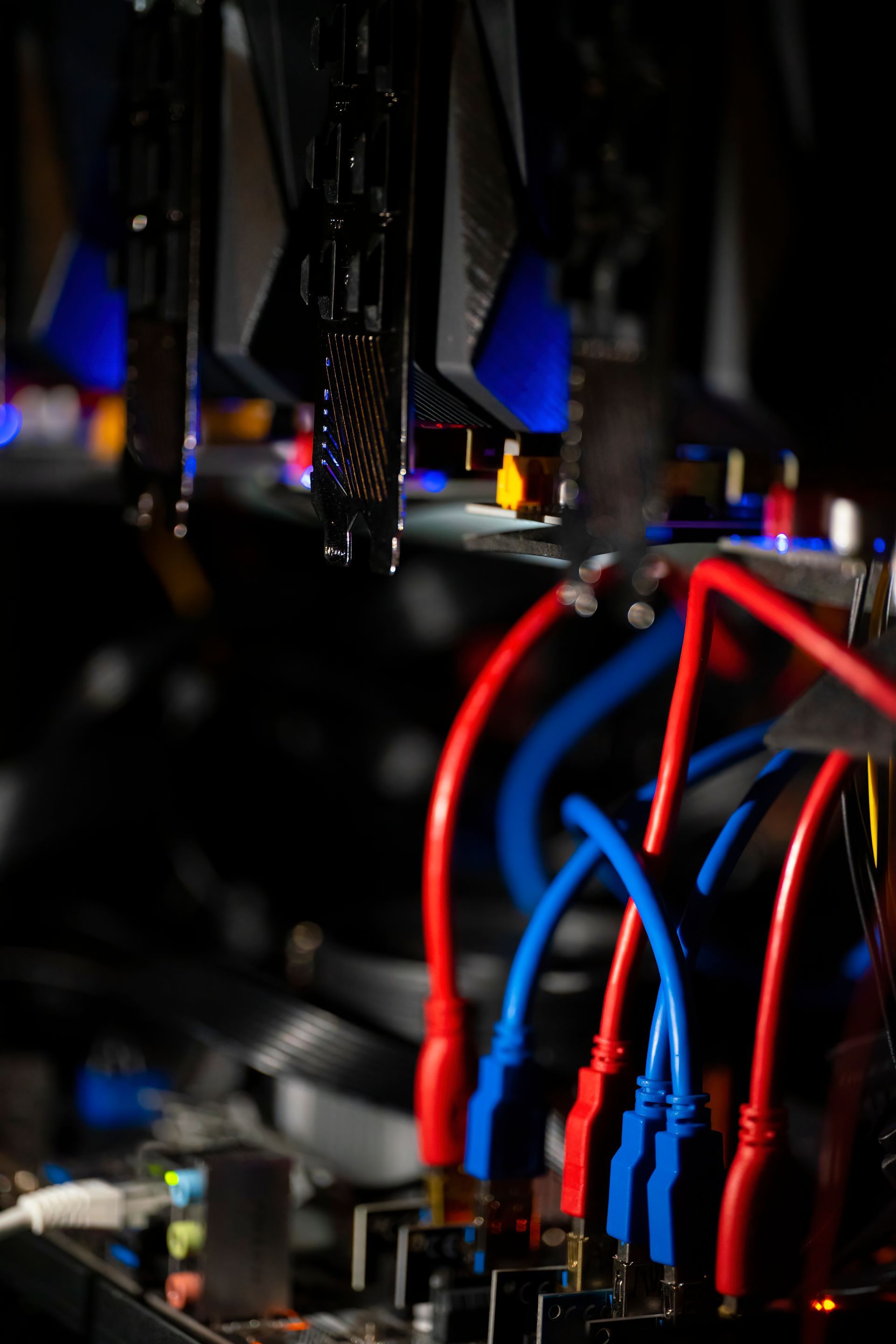Why Unshielded Twisted Pair Is a Smart Choice for Your Home Network
If you've ever set up a home internet connection or wired a smart home system, chances are you've used an unshielded twisted pair cable—maybe without even realizing it.
So, what is unshielded twisted pair cable and why is it a go-to for so many homeowners? In this guide, we’ll break down what you need to know in simple terms, including the benefits, types, pricing, and how it compares to other cable types.

What Is UTP and Why Should Homeowners Care?
UTP stands for unshielded twisted pair. It's one of the most common types of Ethernet cables used in homes today.
The term "twisted pair" refers to how the cable’s wires are paired and twisted together to reduce interference. “Unshielded” means it doesn’t have extra shielding to block out electromagnetic interference—but don’t worry, for most home uses, that’s not a problem at all.
If you’ve heard people talk about Cat5, Cat6, or Cat5e, they’re talking about different categories of unshielded twisted pair cable. These cables are cost-effective, flexible, and great for running internet or phone lines throughout your home.
The Real-World Benefits of Unshielded Twisted Pair Cables
1. Cost-Effective Setup
Compared to shielded cable, UTP is significantly cheaper. Since it doesn’t have additional shielding materials, it’s less expensive to manufacture—and that savings gets passed on to you.
Unshielded twisted pair cable price is one of its biggest selling points for homeowners building a wired network without blowing their budget.
2. Easy to Install
UTP cables are lightweight and flexible, making them easier to route through walls, ceilings, or along baseboards. You don’t need any specialized equipment or training to run them—great for DIYers or quick installations.
3. Supports High Speeds
Don’t let the word “unshielded” fool you—modern UTP cables like Cat6 can handle high-speed internet just fine. They’re perfect for streaming, gaming, video calls, and smart home automation.
4. Low Interference in Residential Settings
In homes, there’s usually not a lot of industrial noise or heavy machinery. That makes unshielded twisted pair ideal, since there's little risk of electromagnetic interference in the average household environment.
5. Future-Proofing with the Right Category
The key is choosing the right UTP cable category. Even though all UTP cables look similar, newer ones (like Cat6 or Cat6a) offer better performance and higher bandwidth.
Understanding the Categories of Unshielded Twisted Pair Cable
Let’s simplify the categories of unshielded twisted pair cable so you know what to buy:
Cat5
- Older standard
- Up to 100 Mbps speed
- Limited to 100 meters
- Still works, but mostly outdated
Cat5e (Enhanced)
- Supports up to 1 Gbps (Gigabit)
- Common in most homes today
- Reduces crosstalk (interference between wires)
Cat6
- Up to 10 Gbps speeds (for shorter distances)
- Better insulation than Cat5e
- Great for streaming and smart home setups
Cat6a
- Supports 10 Gbps over the full 100 meters
- Extra thickness for performance
- Ideal for data-heavy homes or future-proofing
Cat7 and Cat8
- Technically not true UTP as they often include shielding
- Overkill for most home setups
- More expensive and rigid
If you're unsure what you need, Cat5e or Cat6 will be the sweet spot for most homeowners—giving you speed, affordability, and reliability.
What Is the Difference Between UTP and Shielded Cable?
Homeowners often ask: Should I choose unshielded twisted pair or shielded cable?
Shielded cable (sometimes labeled STP) includes a layer of foil or braided shielding to block out interference. It’s useful in settings with a lot of electromagnetic noise—like industrial buildings or hospitals.
But for homes?
UTP does the job just fine. It’s more flexible, easier to install, and significantly cheaper. Unless you live next to a radio tower or have complex wiring near electrical lines, unshielded twisted pair is usually the better choice.
What Is UTP Cable Used For in Homes?
UTP cable might seem like a behind-the-scenes component, but it’s actually one of the most important parts of a modern connected home. From internet speed to smart tech, this humble cable quietly powers much of your daily digital life.
Here’s how homeowners commonly use UTP cable to upgrade their living spaces:
Wired Internet Connections for Faster, More Stable Browsing
Tired of dropped Wi-Fi signals? A wired connection using unshielded twisted pair cable is more reliable and consistent than even the best wireless setup. Whether you’re streaming shows, downloading large files, or just browsing the web, UTP cables provide a direct, interference-free connection from your router to your devices.
It’s especially helpful in large homes where Wi-Fi dead zones are a problem. Running UTP cable to key areas ensures full-speed internet exactly where you need it.
Smart Home Devices Like Security Cameras, Sensors, and Voice Assistants
Today’s smart homes rely on a network of connected devices—many of which benefit from being hardwired. IP security cameras, motion detectors, smart doorbells, and even smart thermostats can use UTP cable for faster data transmission and PoE (Power over Ethernet).
This means fewer wires, more reliable service, and no need to worry about replacing batteries or dealing with Wi-Fi lag in critical systems.
Home Office Setups, Perfect for Remote Work
Working from home has become the norm for many. If your job depends on stable video conferencing, large file uploads, or cloud-based apps, a hardwired UTP cable connection makes a world of difference.
It eliminates buffering, dropped calls, and connection hiccups that can derail your productivity—not to mention your professional image. A simple Ethernet drop to your home office ensures you stay connected all day.
Streaming and Gaming Setups for Lag-Free Entertainment
Whether you’re a movie buff binge-watching the latest series or a gamer chasing low ping, UTP cable gives you the edge. Unlike Wi-Fi, which can be affected by walls, distance, or interference, a wired connection delivers consistent speed and low latency.
Connect your smart TV, gaming console, or streaming box with UTP for a smoother, more enjoyable experience—no buffering, no lag, just pure entertainment.
Voice-over-IP (VoIP) Phones for Clearer Calls
Still use a landline? Many homeowners now rely on VoIP phones that run over the internet instead of traditional phone lines. UTP cable makes it easy to set up a VoIP system at home.
You’ll get crystal-clear audio, fewer dropped calls, and often cheaper service. Plus, you can move your phone setup wherever you have an Ethernet port—no more being tied to the wall jack.
How Much Does Unshielded Twisted Pair Cable Cost?
Unshielded twisted pair cable price varies based on the category and length. Here’s a general idea:
- Cat5e: $0.10–$0.30 per foot
- Cat6: $0.20–$0.50 per foot
- Cat6a: $0.30–$0.60 per foot
Bulk spools (250 ft to 1000 ft) are more economical for whole-home wiring. Pre-cut and pre-terminated cables are available if you just need a few connections.
How to Choose the Right UTP Cable for Your Home
Here’s a quick checklist for picking the best unshielded twisted pair cable for your needs:
✅Choose Cat5e if you're on a budget and need reliable gigabit speeds
✅ Pick Cat6 for higher speeds and future-proofing
✅ Use Cat6a if you're wiring a large home or running cables near appliances
✅ Always check for pure copper conductors (avoid cheaper copper-clad aluminum)
✅ Verify it’s CM-rated or better for in-wall use (check your local building codes)
Installation Tips for UTP Cables
Thinking about doing the install yourself? Here are some homeowner-friendly tips:
- Use cable raceways or conduit for a clean look
- Label each run to avoid confusion later
- Don’t bend the cable sharply—keep gentle curves to avoid damage
- Terminate cables with RJ45 connectors or keystone jacks for easy plugging
- Test connections with a simple network tester before sealing up walls
For large-scale jobs, it might be best to call in a pro—but for smaller projects, UTP cable installation is totally manageable.
Need Reliable UTP Cables Fast?
At Cat5 Guy, we’ve got the high-quality cables and expert advice you need to wire your home or business with confidence.
Contact us for a custom quote—because your network deserves the best.


